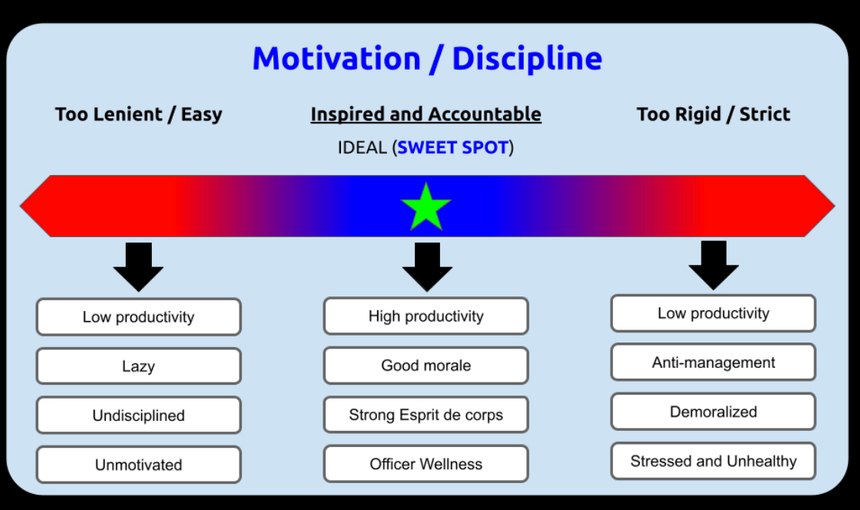Whether in big cities or small rural towns, police leaders across our nation are facing major challenges at present. Recruitment and retention are growing tougher by the day as our profession endeavors to recover from the misleading anti-police narrative that has festered for years now.
It’s no easy task for management to maintain the staff they still have while keeping them motivated and disciplined. We are asking them to work excessively and continually do more with less, all while trying to ensure their safety during their tours of duty. Coupled with the psychological strain stemming from exhaustion, rotating shifts, vicarious trauma due to routine exposure to suffering, the risk of injury, politically motivated attempts to incarcerate them for mistakes, and a lack of appreciation for their work, it’s clear that police leaders have their work cut out for them like never before.
Support and accountability
It is imperative that this effort encompasses the development and sustenance of our agencies to foster motivated public servants who not only enforce the rule of law but abide by it themselves. We need officers who feel supported by their management and communities, yet are prepared to account for their mistakes.
When corrective action is administered, officers need to have confidence that the process fully considers the totality of the circumstances and operates on a progressive discipline model, which includes steps like counseling when applicable. They should anticipate that certain behaviors will not be tolerated, but that most errors are manageable if responsibility is acknowledged.
Bearing in mind that to err is human, management should understand that expressions of leniency may be appropriate in certain situations. The objective is to help officers learn from their mistakes and continue to be productive, motivated public servant guardians.
Striving for the IDEAL discipline model
As depicted in the “Motivation/Discipline” graph below, we should strive for the IDEAL – the sweet spot, so to speak, of being “Inspired and accountable.”

Image/Tom Wetzel
Achieving this state can lead to high productivity from our police officers and staff. Good morale and a strong esprit de corps can also be expected from them. Contented officers can translate into healthy officers, as internal stressors should be minimized, thereby offering a significant wellness benefit to our officers.
Once this ideal state is achieved, leadership must remain vigilant to maintain it, as it can be easy to slide in either direction. This ethos should be integral to the culture and should be encapsulated in the mission statement and institutional values. When grooming future leadership, appreciation of this vision should be emphasized to promotional candidates to ensure continuity. A new leader who doesn’t appreciate this vision could swiftly undo the “sweet spot,” turning the situation sour.
The dangers of extremes
A leader could potentially push toward a “Too Rigid/Strict” extreme, where an anti-management attitude among the rank and file might thrive. Such an attitude could result in a slew of grievances being filed and undue time squandered in labor hearings. Contesting these grievances would strain the budget, both in terms of taxpayer money and workplace harmony.
Landing on this end of the spectrum could lead to a demoralized police force, where officers might feel that any mistake will bring down severe retribution akin to an anvil dropping on their heads, reminiscent of an old Looney Tunes cartoon. Low productivity may then ensue as officers might be less inclined to take any risks for fear of making a mistake that will attract excessive punishment. Existing in such an environment could also inflict a tremendous amount of stress on the officers. This stress is unlikely to dissipate once they remove their uniforms; it may follow them home and impact their personal lives. Scientific studies have illustrated that stress can precipitate serious health issues, and under such conditions, we might be fostering anxious, unhealthy officers who are apprehensive about executing their duties and resent their leadership. This scenario is far from ideal.
Swinging too far toward the side of being “Too Lenient/Easy” may result in lazy and unmotivated police officers and staff. Communities would then see a meager return on their tax investment as many of these officers might exhibit low productivity and lack the drive to go above and beyond. Many may not enforce the law to any significant extent, leading to neighborhoods and streets that are less safe. Citizens may not experience the sense of safety and security they deserve and have financed through their taxes. However, these issues pale in comparison to the fear of undisciplined police officers who may feel they are above the rules and laws. Such environments are fertile grounds for scandals, where civil rights could be grossly violated. And when this transpires, the repercussions could be severe. What might have been nipped in the bud early on could evolve into a tsunami of problems that might take years to rectify. A review of previous police corruption cases reveals how enduring they were, seemingly due to a lack of attention, allowing these rogue officers to operate under the radar for an extended period. Leadership appeared to be asleep at the wheel, and a hefty price was paid.
The sweet spot
Motivation and discipline are critical components intertwined within the fabric of a police organization. Finding a seamless and balanced blend of these elements is vital. The graph can serve as a conceptual guide, providing the vision and encouragement needed to discover the internal formulas that cultivate “Inspired and Accountable” public servants. Upon achieving this, they will have found the “sweet spot,” marking a leadership magnum opus. This state is what both the server and the served deserve, and it is attainable with the requisite desire and focus.
NEXT: Alternate discipline programs: How to keep employees engaged after being disciplined


